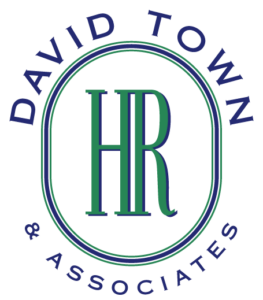Managing Employee Performance – Assessing Performance

This blog is part of a series focusing on the topic of “Managing Employee Performance”. Managing employee performance in the workplace is comprised of all of the interactions and activities that take place between an employer and an employee, that result in the achievement of goals and expectations.
The previous two blogs offered insights into how to set expectations. We will now explore how to assess performance and provide employees with meaningful information on how they are doing.
The Role of Performance Assessment
One of the key hurdles I encounter when talking about performance assessment with managers is the notion that performance appraisals take place once a year and they focus on the completion of forms to be submitted to the Human Resources department. This understanding of the role of performance assessment is somewhat troubling as it seems to completely miss the key objective – helping employees maximize their performance.
How Often Do You Do Performance Appraisals?
When facilitating training sessions on the topic of performance management, I often ask participants the following question: “how often do you do performance appraisals?” I suggest that they think carefully about what the question is really asking as it is meant to be somewhat of a trick question.
The answer that frequently emerges is: “I conduct performance appraisals annually or semi-annually”. In response to this, I point out that if we really think about it, performance appraisals take place every time we observe an employee in action.
Performance Reviews: Making the Distinction
Performance reviews on the other hand typically take place within a schedule that involves a meeting on an annual or semi-annual basis. Although making this distinction may be seen as simply a matter of semantics, I think it leads to some very important questions that must be considered when thinking about effective management of employee performance. The questions are:
“How often do I assess employee performance?”
“How often do I share the assessment with the employee?”
“How do I give them my feedback?”
The answers to these questions can be an important indicator of the effectiveness of the performance management process. Let’s take a brief look at each of these questions.
How Often Do I Assess Employee Performance?
This first question cannot be answered with a definitive time frame such as once a day or once a week. There are many factors that impact the decision on how frequently to monitor employee performance. A good answer to this question is “it depends on the situation.”
Factors such as an employee’s confidence, competence and experience together with the complexity, risk and importance of the task all play a part in determining how often the manager should be assessing employee performance.
What can be said definitively is that anyone who manages the performance of another employee must provide ongoing feedback to the employee to help them achieve maximum performance.
In their book entitled “The Progress Principle”, Teresa Amabile and Steven Kramer cite research on the value of providing employees with progress reports on their performance. The evidence is clear – providing progress reports significantly increases engagement and performance. Often the issue is the mindset of the manager.
For example, while delivering training to a group on how to provide effective performance feedback, one of the participants remarked that it takes time to provide ongoing feedback, which takes time away from their ability to do their “real” job. This participant’s thinking shines a light on an important mindset challenge that many managers must overcome.
The vast majority of jobs that involve responsibility for managing the performance of other employees have two key sets of accountabilities: technical accountabilities and people accountabilities. You can’t just focus on the technical accountabilities, hope there is time left for the people accountabilities and expect the team to maximize its performance. When you manage others, your “real” job includes taking time to provide ongoing feedback.
How Often Do I Share the Assessment with the Employee?
The answer to this second question is the same as the answer to the first question – “it depends on the situation”. Providing ongoing feedback is important and it can be time-consuming. In order to balance the demands for time on technical accountabilities and people accountabilities, a good strategy for deciding when to invest time in your people accountabilities is to provide feedback when an employee has demonstrated a behavior or achieved an outcome that has a significant impact on them or the organization. The greater the impact, the more important it is to take time to share your assessment.
How Do I Give Them My Feedback?
The answer to the third question will be the subject of the next blog.
In summary, the first step in effectively managing employee performance is the process of setting expectations – both the ongoing job accountabilities as well as the time framed goals. The second step is to assess employee performance. Subsequent blogs will offer insights on how to effectively manage conversations where the goal is to share your performance assessment with the employee. We will also examine the importance of creating a motivating environment in order to help an employee succeed as part of an effective program for managing employee performance.
As always, I welcome your feedback. You can connect with me via email or telephone or leave a comment right here on the site.
Until next time,
Dave
David Town, CHRL, is a facilitator and coach of leadership and management principles that enable individuals and organizations to build greater leadership competency, resulting in higher performance and higher employee engagement. David has a particular focus on effectively managing conversations involving confrontation or conflict. As well, he provides insights and assessment strategies for integrating character competencies into leadership skills resulting in increased trust and reduced risk for leaders. David is a member of the International Coaching Federation and is President of Your Leadership Matters Inc.






Leave a Reply
Want to join the discussion?Feel free to contribute!